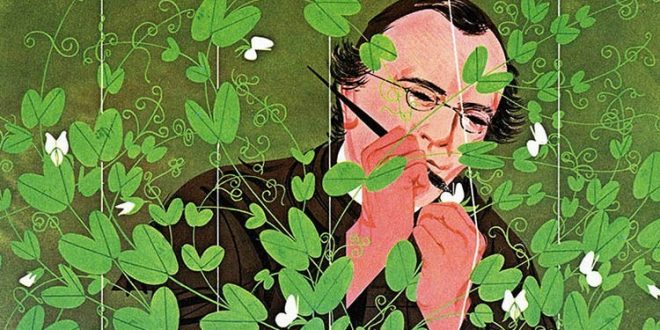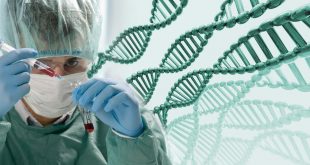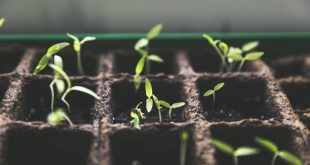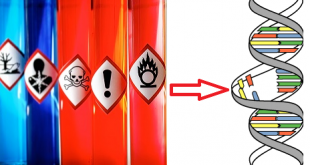From the title we can easily understand that this article is about a part of genetics studies. So, what is genetics? The biological science which deals with the phenomena of heredity (i.e. transmission of traits form one generation to another) and variation and the study of the laws governing similarities and differences between individuals related by descent is called “GENETICS”.
There will be three articles of this title. Mendelian Inheritance (part-I, part-II & part-III). So obviously this is the first part. At this part we will discuss –
- Historical background of Genetics and
- Basic terms used in genetics.
So without any delay let’s get started.
Our first topic is:
Historical Background of Genetics
To know the historical background of genetics, first we have to know what genetics is.
Genetics
Genetics includes the study of heredity, or how traits are passed from parents to offspring.

Now there may be two questions:
(a) What is Heredity?
(b) Why do offspring resembles to each other?
Heredity
The sum of all biological processes that cause transmission of traits from one generation to another is termed as heredity.
- The word refers to the phenomenon that is responsible behind this showing up of traits or physical features found in the older generation into the new generation.
- It is through heredity that all of us living beings inherit characteristics or traits from our parents and other ancestors.
Best safe and secure cloud storage with password protection
Get Envato Elements, Prime Video, Hotstar and Netflix For Free
Best Money Earning Website 100$ Day
#1 Top ranking article submission website
GENES ⇒ PARENTS ⇒ OFFSPRING
- Heredity decides the color of the eyes of a newborn.
- Scientists explain heredity with the help of genes and their combinations.
Individuality of Species
Each species has ‘’Individuality” i.e. Each species is recognizable by its certain specific morphological, physiological and behavioral characteristics.

Variation
The characteristics which provide individuality to a species are said to cause Variation among the species.
Variations may be of following two kinds:
1. Hereditary variation
2. Environmental Variation
1) Hereditary Variation
Hereditary is a word that pertains to heredity.
- Hereditary is a modification of the word heredity to describe something that is a result of heredity.
- Thus, we call a character or disease as being a hereditary when there is evidence to suggest that it is transmitted by parents to their offspring.
- Among the sexually reproducing organisms no two individuals have the same heredity. The differences in the constitutions of the individuals of a species are known as hereditary or genetical variations.
2) Environmental Variation
The variations which are not inherited but are due to the effects of temperature, moisture, food, light or any other environmental factors on the development of the organism are called environmental variations.
For Example:

So, the heredity and variations have a significant role in the formation of a new species. i.e. Speciation.
Genetics
The biological science which deals with the phenomena of heredity (i.e. transmission of traits form one generation to another) and variation and the study of the laws governing similarities and differences between individuals related by descent is called “GENETICS”.
- William Bateson, an Englishman, first coined the term “Genetics” from Greek word root “Gen” which means ‘to generate” in 1906.
According to old concepts:
- All life comes from other life:
Living organisms are not spontaneously generated from non-living material. Big exception: origin of life.
- Species concept:
offspring arise only when two members of the same species mate. Monstrous hybrids don’t exist.
- Preformation theory:
Organisms develop by expressing information carried in their hereditary material. As opposed to “preformation”, the idea that in each sperm (or egg) is a tiny, fully-formed human that merely grows in size.
- The environment can’t alter the hereditary material in a directed fashion. There is no “inheritance of acquired characteristics”. Mutations are random events.
- Male and female parents contribute equally to the offspring.
- Ancient Greek idea: male plants a “seed” in the female “garden”.
- Alleged New Guinea belief: sex is not related to reproduction.
Major Breakthrough
1859: Charles Darwin publishes The Origin of Species, which describes the theory of evolution by natural selection. This theory requires heredity to work.
1866: Gregor Mendel publishes Experiments in Plant Hybridization, which lays out the basic theory of genetics. It is widely ignored until 1900.
1871: Friedrich Miescher isolates “nucleic acid” from pus cells.
20th Century Events-
- 1900: rediscovery of Mendel’s work by Robert Correns, Hugo de Vries, and Erich von Tschermak .
- 1902: Archibald Garrod discovers that alkaptonuria, a human disease, has a genetic basis.
- 1904: Gregory Bateson discovers linkage between genes. Also coins the word “genetics”.
- 1910: Thomas Hunt Morgan proves that genes are located on the chromosomes (using Drosophila).
- 1918: R. A. Fisher begins the study of quantitative genetics by partitioning phenotypic variance into a genetic and an environmental component.
- 1926: Hermann J. Muller shows that X-rays induce mutations.
- 1944: Oswald Avery, Colin MacLeod and Maclyn McCarty show that DNA can transform bacteria, demonstrating that DNA is the hereditary material.
- 1953: James Watson and Francis Crick determine the structure of the DNA molecule, which leads directly to knowledge of how it replicates.
- 1966: Marshall Nirenberg solves the genetic code, showing that 3 DNA bases code for one amino acid.
- 1972: Stanley Cohen and Herbert Boyer combine DNA from two different species in vitro, then transform it into bacterial cells: first DNA cloning.
- 2001: Sequence of the entire human genome is announced.
Molecular Reality
Current View
(almost) All inheritance is based on DNA: the sequence of ACGT nucleotides encodes all instructions needed to build and maintain an organism.
A chromosome is a single DNA molecule together with other molecules (proteins and RNA) needed to support and read the DNA.
A gene is a specific region of a chromosome that codes for a single polypeptide (linear chain of amino acids).
Proteins are composed of one or more polypeptides, plus in some cases other small helper molecules (co-factors). Proteins do most of the work of the cell.
After a long discussion we have successfully finished our first topic. Now it’s time for our second topic.
Basic Terms Used In Genetics
Gene
The gene is the basic physical unit of inheritance. Genes are passed from parents to offspring and contain the information needed to specify traits. Genes are arranged, one after another, on structures called chromosomes. A chromosome contains a single, long DNA molecule, only a portion of which corresponds to a single gene. Humans have approximately 20,000 genes arranged on their chromosomes.
Genome
The genome is the entire set of genetic instructions found in a cell. In humans, the genome consists of 23 pairs of chromosomes, found in the nucleus, as well as a small chromosome found in the cells’ mitochondria. Each set of 23 chromosomes contains approximately 3.1 billion bases of DNA sequence.
Genotype
A genotype is an individual’s collection of genes. The term also can refer to the two alleles inherited for a particular gene. The genotype is expressed when the information encoded in the genes’ DNA is used to make protein and RNA molecules. The expression of the genotype contributes to the individual’s observable traits, called the phenotype.
Phenotype
A phenotype is an individual’s observable traits, such as height, eye color, and blood type. The genetic contribution to the phenotype is called the genotype. Some traits are largely determined by the genotype, while other traits are largely determined by environmental factors.
Allele
An allele is one of two or more versions of a gene. An individual inherits two alleles for each gene, one from each parent. If the two alleles are the same, the individual is homozygous for that gene. If the alleles are different, the individual is heterozygous. Though the term allele was originally used to describe variation among genes, it now also refers to variation among non-coding DNA sequences.
Locus
The position of a gene on a chromosome or other chromosome markers; also, the DNA at that position. The use of the term locus is sometimes restricted to main regions of DNA that are expressed. Plural: loci.
Homozygous
Homozygous is a genetic condition where an individual inherits the same alleles for a particular gene from both parents.
Heterozygous
Heterozygous refers to having inherited different forms of a particular gene from each parent. A heterozygous genotype stands in contrast to a homozygous genotype, where an individual inherits identical forms of a particular gene from each parent.
Co-dominance
Codominance is a relationship between two versions of a gene. Individuals receive one version of a gene, called an allele, from each parent. If the alleles are different, the dominant allele usually will be expressed, while the effect of the other allele, called recessive, is masked. In codominance, however, neither allele is recessive and the phenotypes of both alleles are expressed.
Dominant
Dominant refers to the relationship between two versions of a gene. Individuals receive two versions of each gene, known as alleles, from each parent. If the alleles of a gene are different, one allele will be expressed; it is the dominant gene. The effect of the other allele, called recessive, is masked.
Recessive
Recessive is a quality found in the relationship between two versions of a gene. Individuals receive one version of a gene, called an allele, from each parent. If the alleles are different, the dominant allele will be expressed, while the effect of the other allele, called recessive, is masked. In the case of a recessive genetic disorder, an individual must inherit two copies of the mutated allele in order for the disease to be present.
Linkage
Linkage is the close association of genes or other DNA sequences on the same chromosome. The closer two genes are to each other on the chromosome, the greater the probability that they will be inherited together.
Incomplete dominance
The condition in heterozygous where phenotype is intermediate between the two homozygotes.
Independent segregation
The random or independent behavior of genes on different pairs of chromosomes.
Dihybrid cross
The cross between two pairs of contrasting characters is called as dihybrid cross. e.g. TTRR(tal round) X ttrr (dwarf wrinkle)
Monohybrid cross
The cross between two pairs of opposite characters is called as monohybrid cross. e.g. TT(Tall) X tt(dwarf).
Back cross
A cross between F1 progeny with any one dominant or recessive parent is called as back cross. e.g. TtXTT or Tt or tt.
Test cross
A cross between F1 progeny with recessive parent is called test cross. e.g.Tt X tt.
Phenocopy
An individual who has a phenotype similar to that produced by a certain mutant genotype, even though the individual may not have that genotype.
Multiple allele
Three or more alternative conditions of a single locus (i.e. gene) produce different phenotype.
Multiple gene
Two or more different pairs of alleles, with a presumed cumulative effect, governing such quantitate traits as size and intelligence.
Epistatic gene
Originally a gene or locus which suppressed or masked the action of a gene at another locus termed as suppressor or epistatic gene.
Hypostatic gene
The gene or locus which is suppressed by a hypostatic gene called hypostatic gene.
Homologous chromosome
Chromosomes occurring in pairs, one derived from each of two parents, normally morphologically alike and bearing the same gene loci. Each member of such a pair is the homolog of the other.
Meiotic drive
A disturbance in the expected one to one ratio of homologous chromosome at meiosis.
You may think that there are so many terms. How am I supposed to remember all these?
I have a very simple solution. Actually three. You just have to read, read and read.
We have successfully finished our first part. Now all you have to do is to go to our website home page and read the second part.
 Plantlet The Blogging Platform of Department of Botany, University of Dhaka
Plantlet The Blogging Platform of Department of Botany, University of Dhaka





Your article gave me a lot of inspiration, I hope you can explain your point of view in more detail, because I have some doubts, thank you.